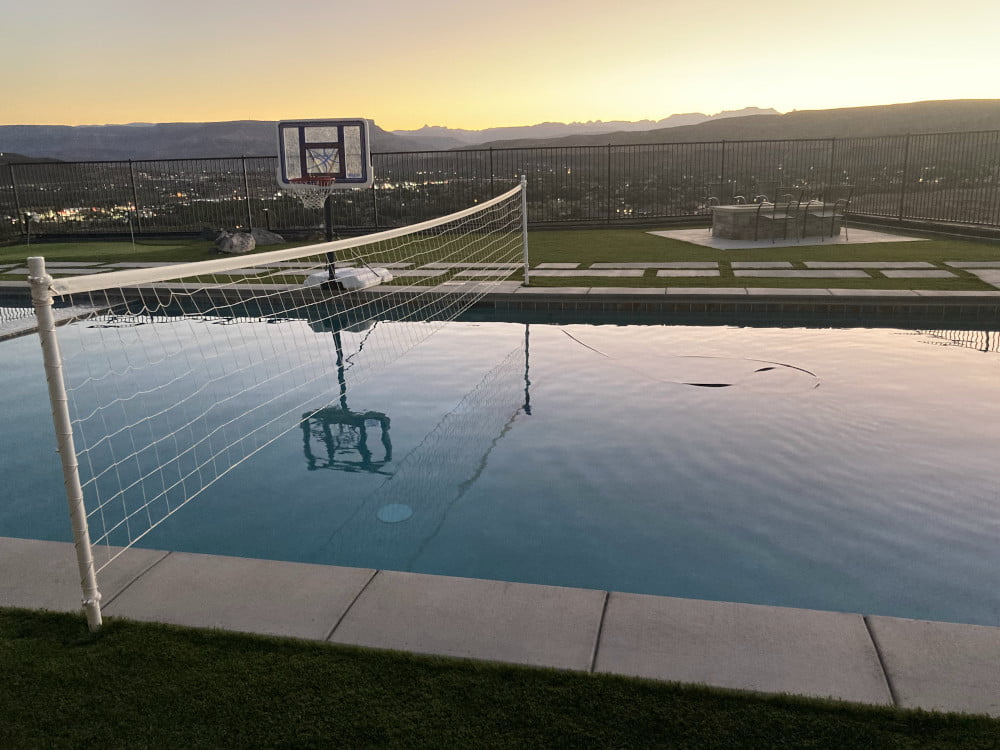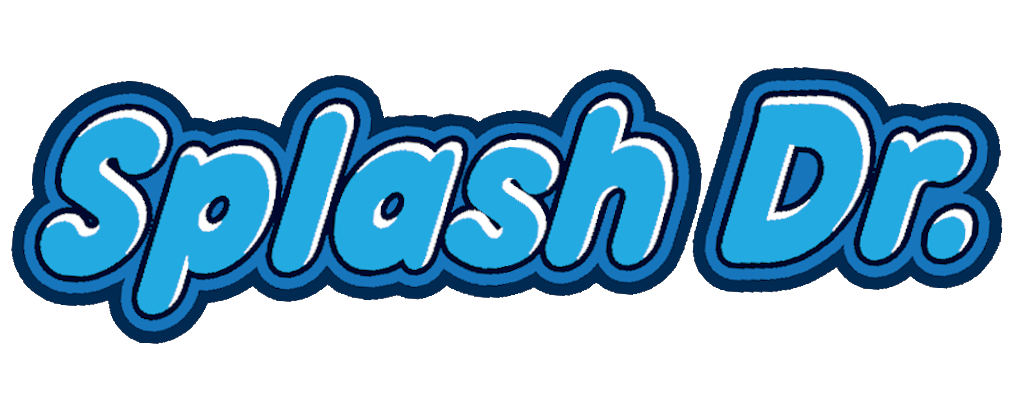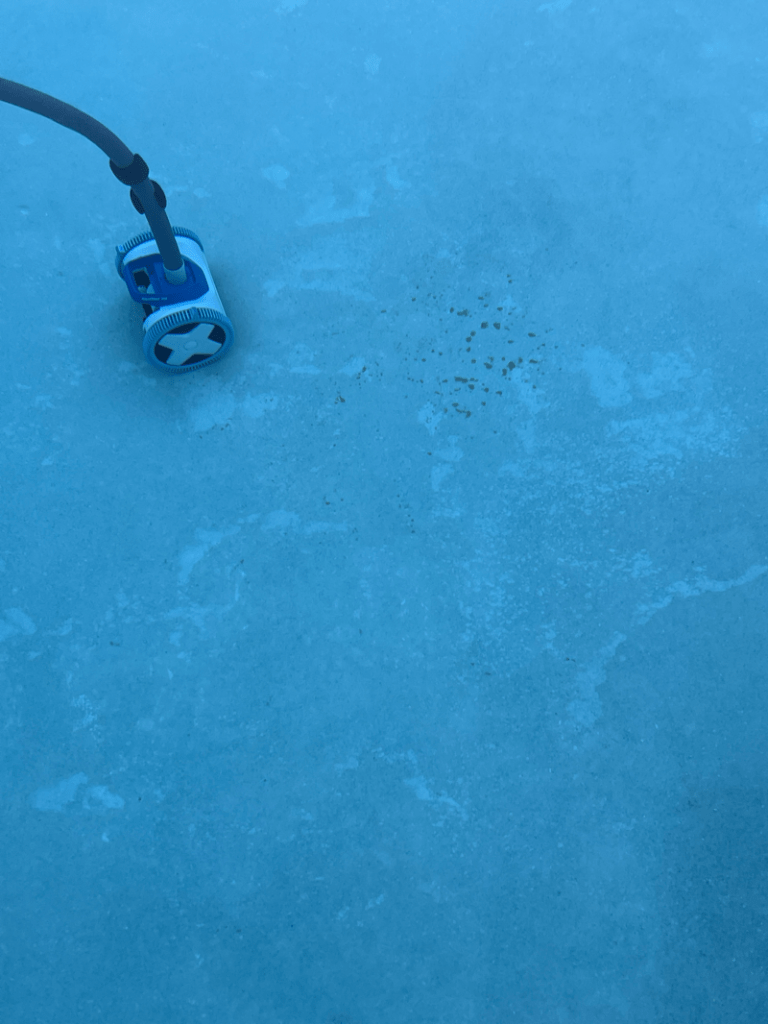
Clear water does not always mean no algae
With this pool in Hurricane, Ut we first got a call from the original pool builder. They informed us that this customer needed some education on automation and what chemicals to add. When we arrived at the pool it looked mostly clean and had clear water.
The customer complained that no matter how high she set the salt water generator, the pool seemed to never have chlorine. She said she thought maybe the salt cell needed to be cleaned or the filters. We did a full set of water tests and found the following results:
| pH | 8.4 |
| Chlorine | 0 |
| Cyanuric Acid | 0 |
| Alkalinity | 140 |
| Calcium Hardness | 250 |
| Salt | 3200 |
| Filter Pressure | 30 |
| Water Temperature | 78 |
Would you like a free quote for pool service?
We offer an easy-to-use, instant quote form that gives you a quote on pool service in Hurricane based on your pool size, location, and frequency of service. Do not wait for your small pool problems to become large problems. Get a free quote today!
We start every new pool we get with cartridge filter cleaning and salt cell cleaning anyways so we did on this pool as well. This ensures we start off on the right foot and we can get it on our quarterly schedule for filter and salt cell cleanings after that.
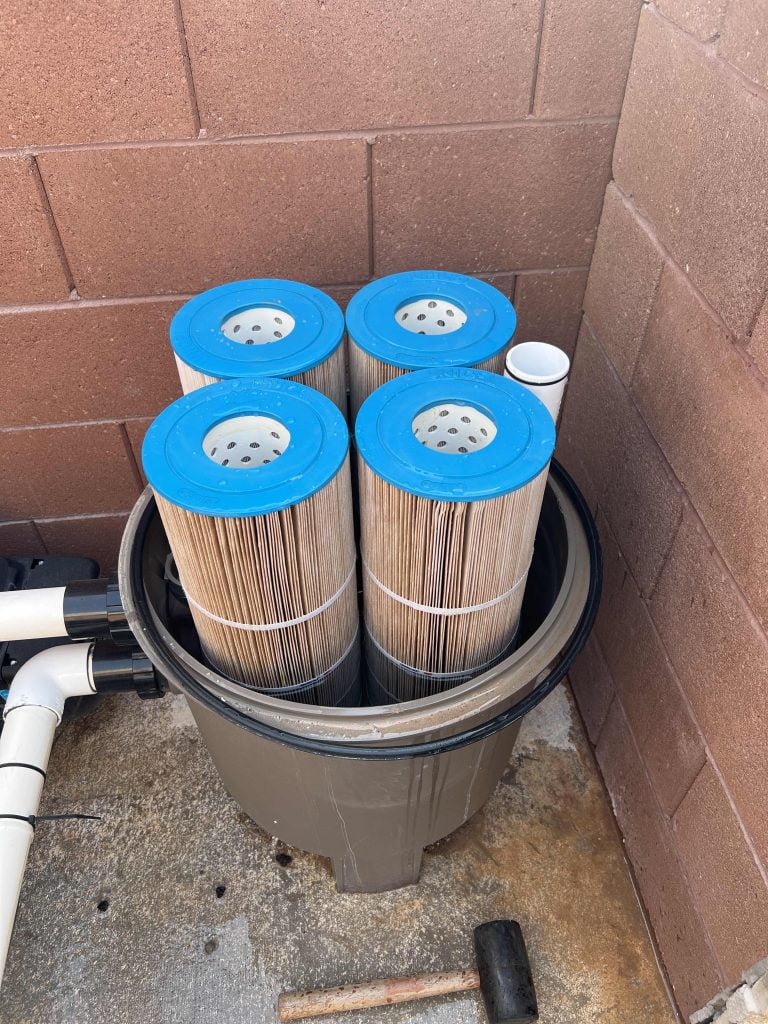
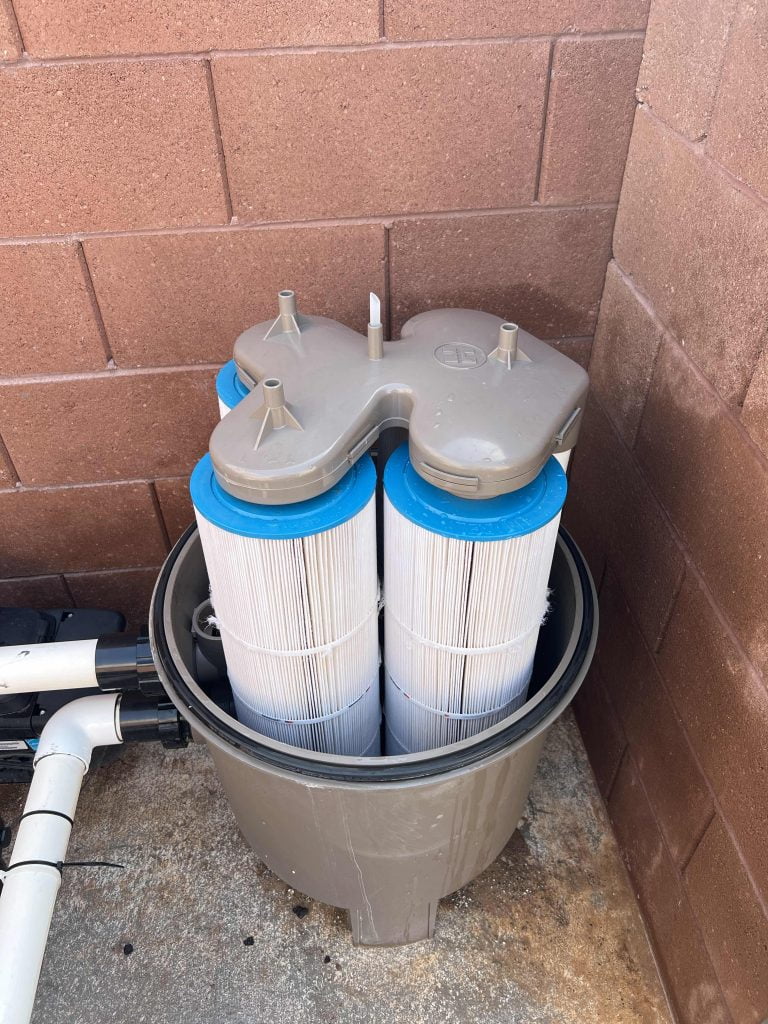
After we cleaned the filters and salt cell, We began providing automation education and chemical training and this customer decided that they would rather just have our company take care of their pool. They weren’t interested in trying to learn about chemical balancing and felt this was a better way to go.
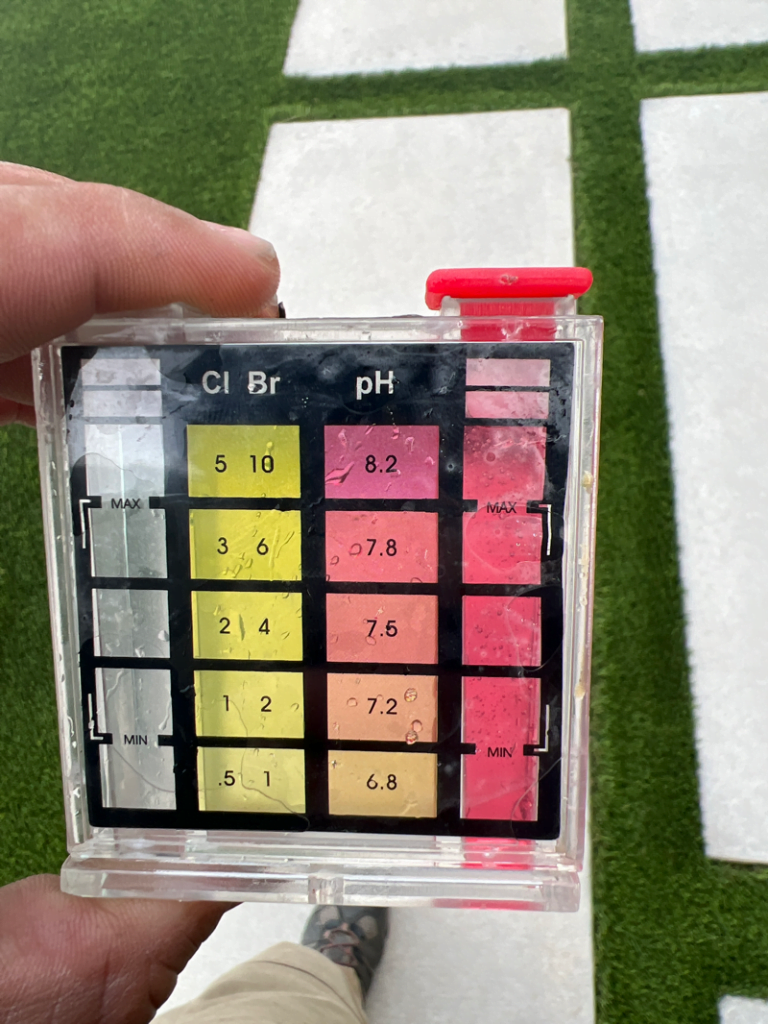
To begin their weekly pool service, we added an initial dose of chlorine to test to see if the pool would pass an overnight chlorine drop test. We wanted to confirm our suspicions that the reason the pool never seemed to have chlorine was due to algae. The customer also showed us that they had these small dots of brown that kept showing up. We were fairly certain based on the clean condition of the salt cell that the reason for zero chlorine was algae and not the salt cell.

We came back first thing in the morning to test the drop in chlorine level and found there was zero chlorine again. This confirmed that algae was most certainly in fact present.
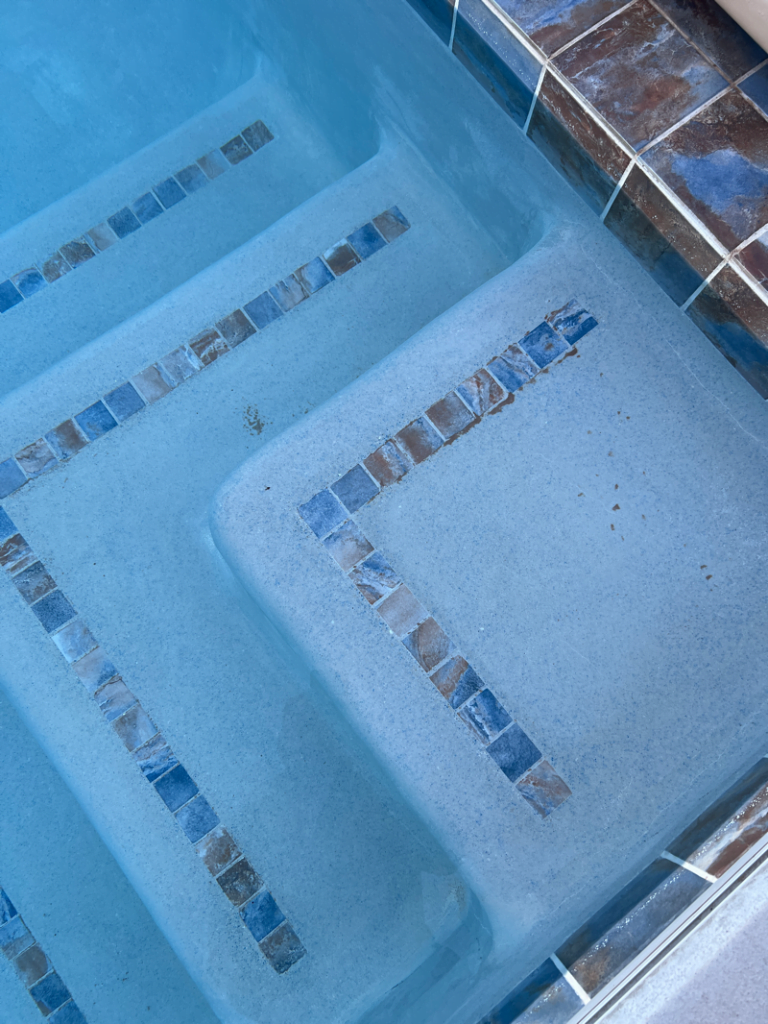
The customer had some leftover Cal Hypo they wanted us to use to shock their pool. We normally use liquid chlorine for shock treatments due to the relatively high calcium levels in the tap water in Hurricane, Utah. Cal Hypo will add more calcium to the pool so we always check to make sure their calcium level is not on the high side of recommended levels. We tested this client’s pool first and determined we could stay within limits for calcium hardness even by using the Cal Hypo so we started the shock.
Would you like a free quote for pool service?
We offer an easy-to-use, instant quote form that gives you a quote on pool service in Hurricane based on your pool size, location, and frequency of service. Do not wait for your small pool problems to become large problems. Get a free quote today!
When we shock a pool we use the chlorine/cya relationship to determine the proper chlorine shock level. On this pool there was zero cyanuric acid so a chlorine level of 10ppm was sufficient to shock the pool. We added enough calhypo to get it to this level and covered the pool back up with their automatic pool cover.
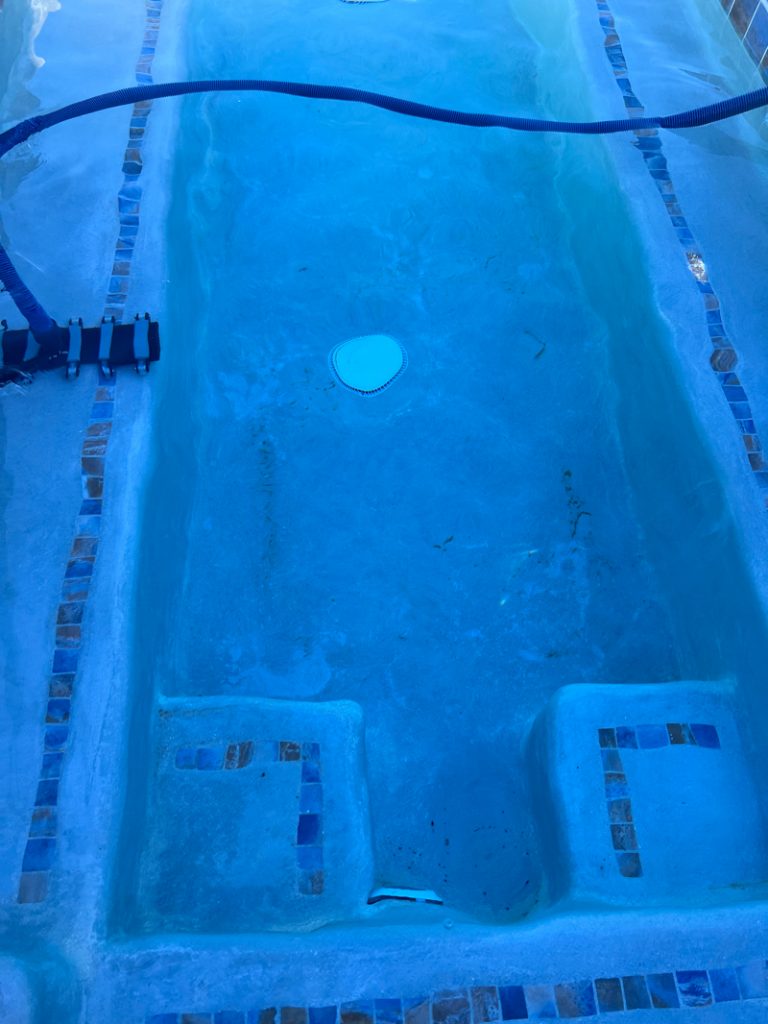
For all of our shock treatments, we test and add chlorine every morning, afternoon, and evening until it passes an overnight chlorine test successfully.
In this particular pool, it took 5 days to successfully pass an overnight chlorine test. At this point, we had the pool under control and could bring the stabilizer level up as well as fine-tune the salt level. During the shock treatment we continued brushing, skimming, and vacuuming to ensure everything was cleaned out. We found bugs, a dead mouse and many other strange things while the shock treatment was ongoing.
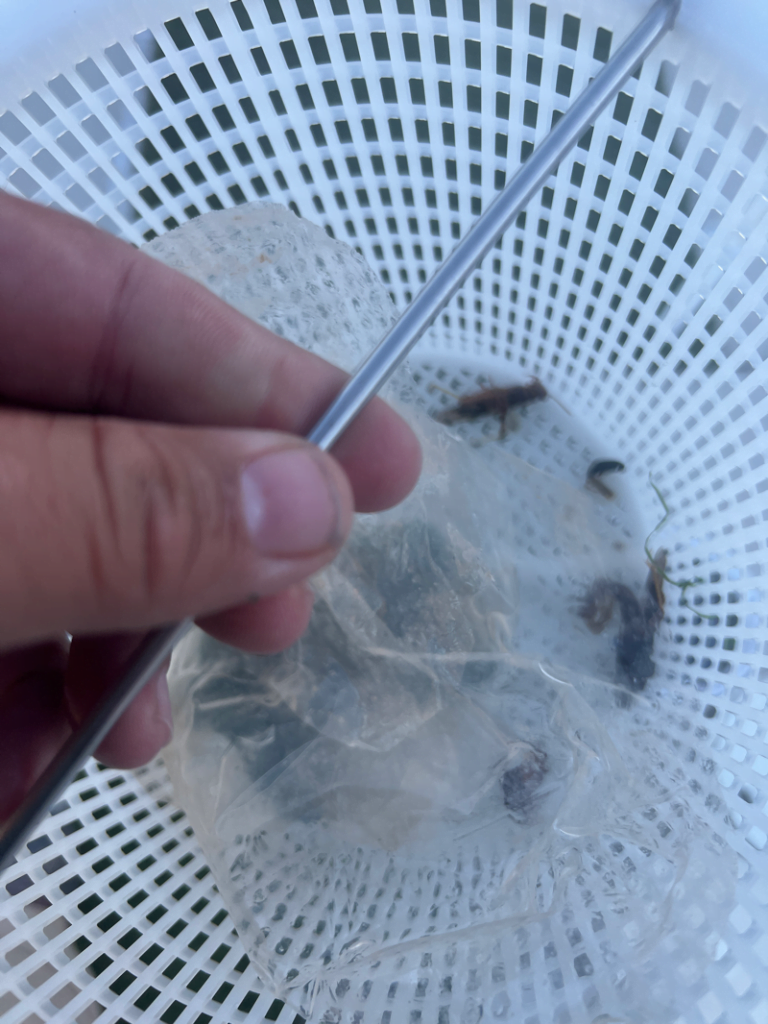
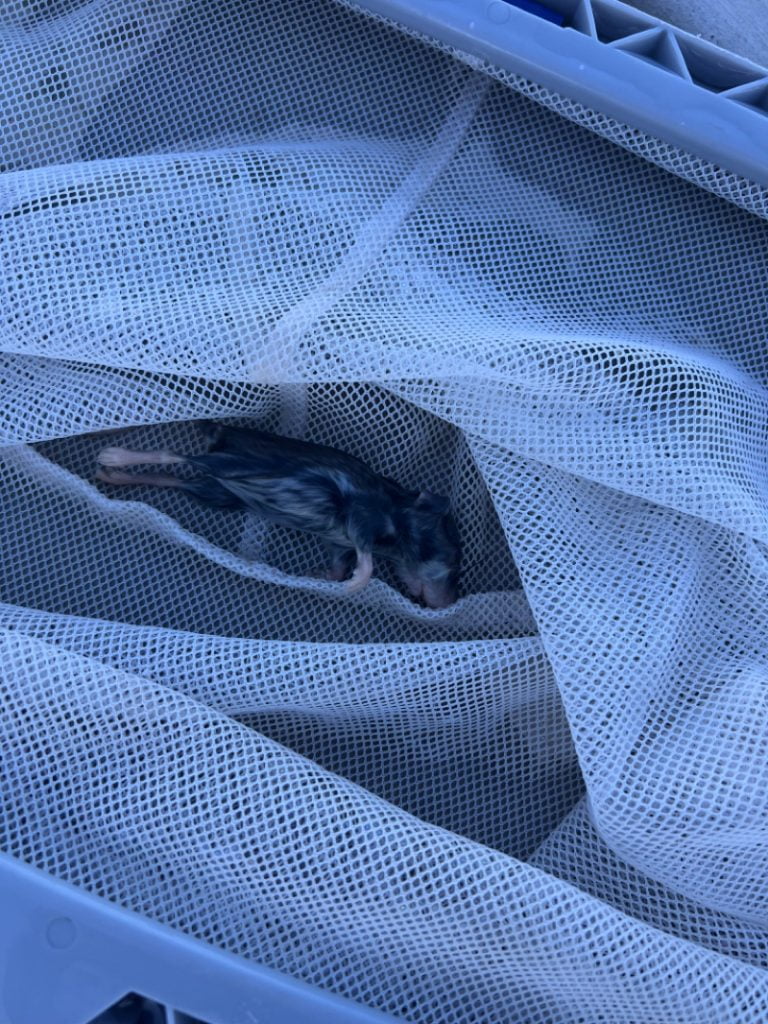
We added 4 gallons of liquid chlorine stabilizer to help prevent the chlorine from burning off too quickly.
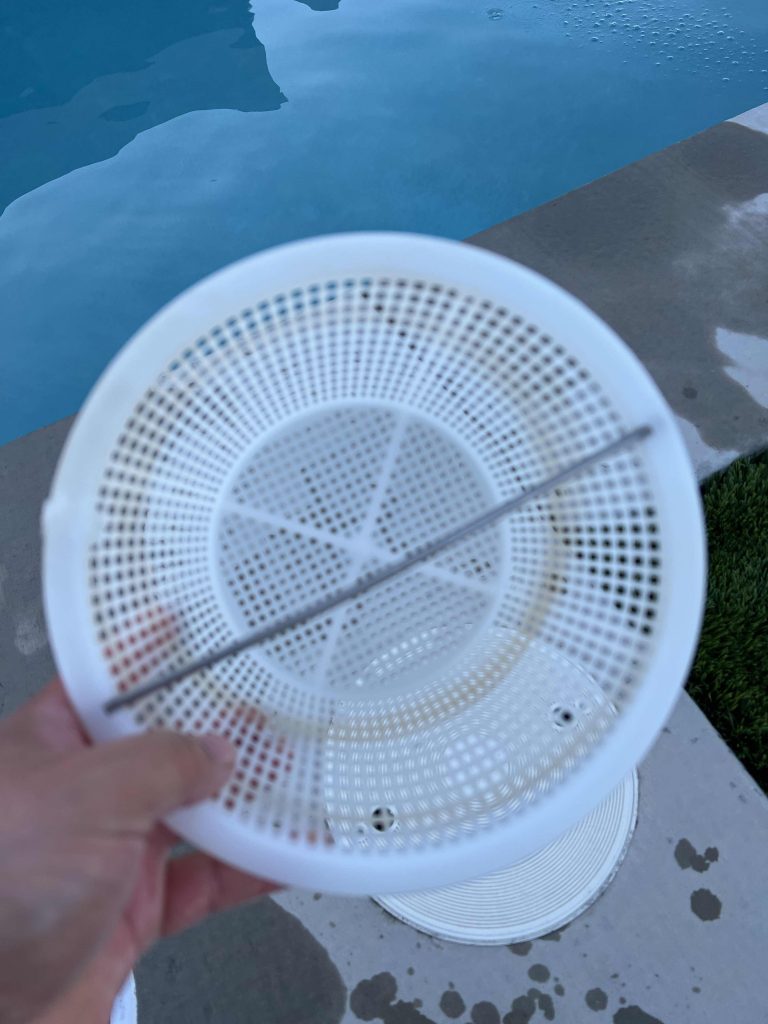
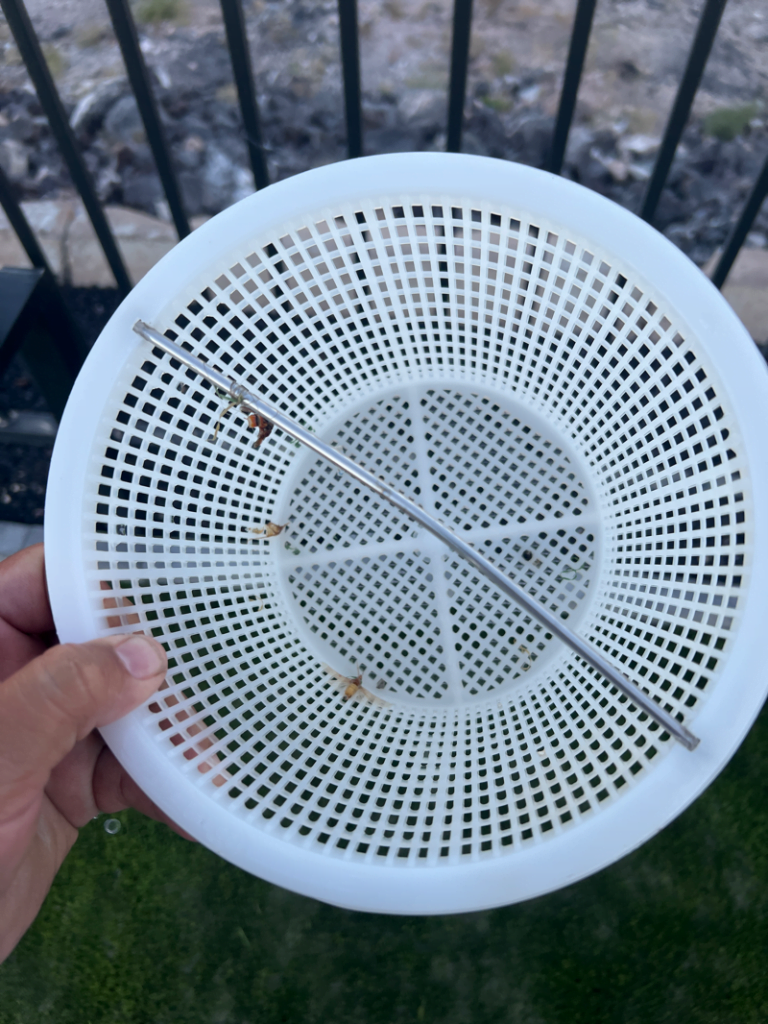
To add liquid cyanuric acid we turn the pool pump on high and open the skimmer to fully open. We then slowly pour the liquid cya into the skimmer to circulate it throughout the pool.
At this point we were able to start addressing another issue the customer had with their pool. There was always a lot of air in the pump. When we troubleshot this issue, we first applied magic lube to the pump lid seal to make sure it wasn’t a seal problem. The pump was less than a year old so we weren’t concerned with the impeller or internal seals as being the culprit. We were able to isolate the pump problem and found that it only occurred when the dedicated suction line for the vacuum was being used. We found that if we were pulling suction from just the skimmer or main drain the pump ran properly. As soon as we open the dedicated suction side vacuum port the pump would fill halfway with air and would not change the entire time the vacuum was on.
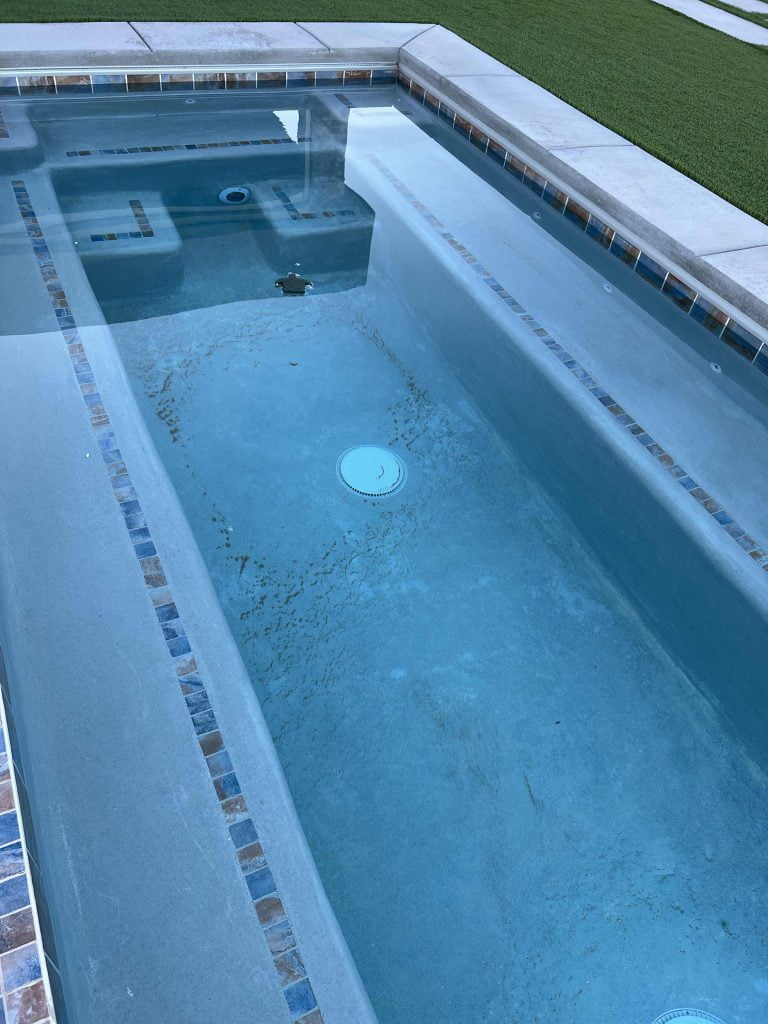
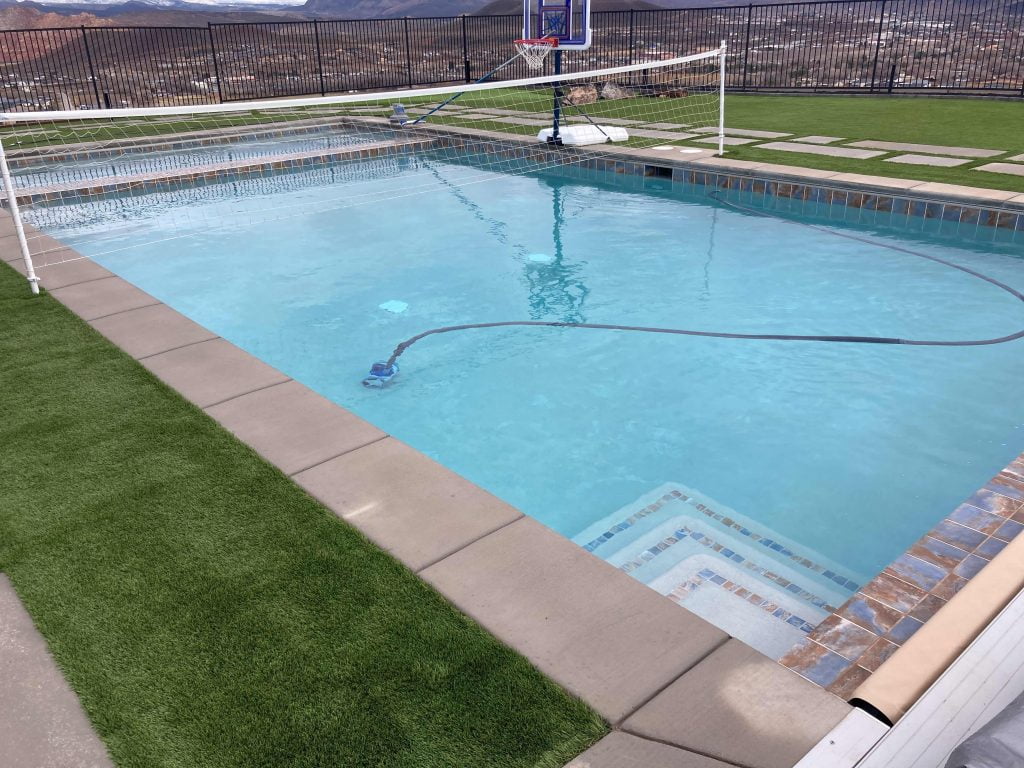
We then went to the vacuum to test to see if the vacuum itself was the problem. We found that even with the vacuum disconnected from the suction line, the pump still pulled a lot of air through the dedicated vacuum line.
What this indicated to use is a break in the vacuum line somewhere underground. We were also able to confirm this over time because the customer was given a notice that they were using a tremendous amount of culinary water constantly. We found that the auto-fill was on and decided to test it to see if the pool was leaking. We shut the auto-fill off and found the pool was losing a few inches of water in a relatively short time. In order to stop the pool from leaking we figured it was probably all related to the broken vacuum line. We put a threaded 1.5-inch cap in the vacuum port and left the pool sit for 1 week without the auto-fill on and the cover over it. At the end of the week, we found that the pool was no longer leaking.
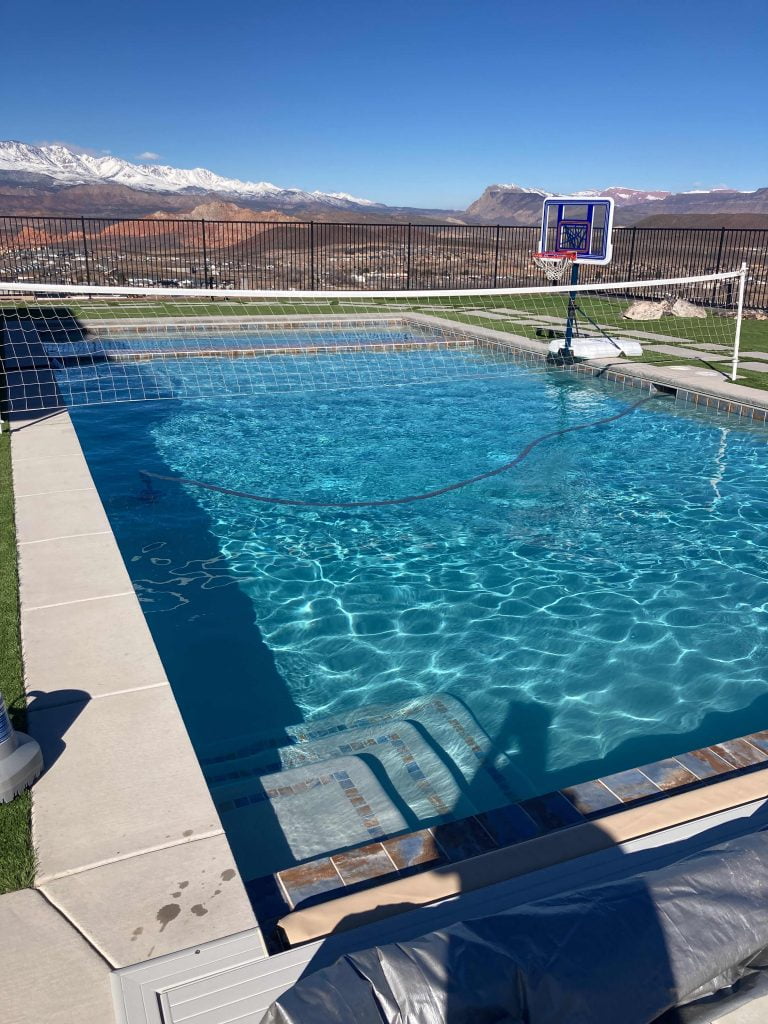
We suggested to the customer that we do a more permanent cap on the dedicated vacuum line until it can be repaired, and switch to a Dolphins Active 20 robotic vacuum instead. This has solved the problem of the leak and the air in the line at the same time. Down the road, they will dig up the line and repair the broken pipe.
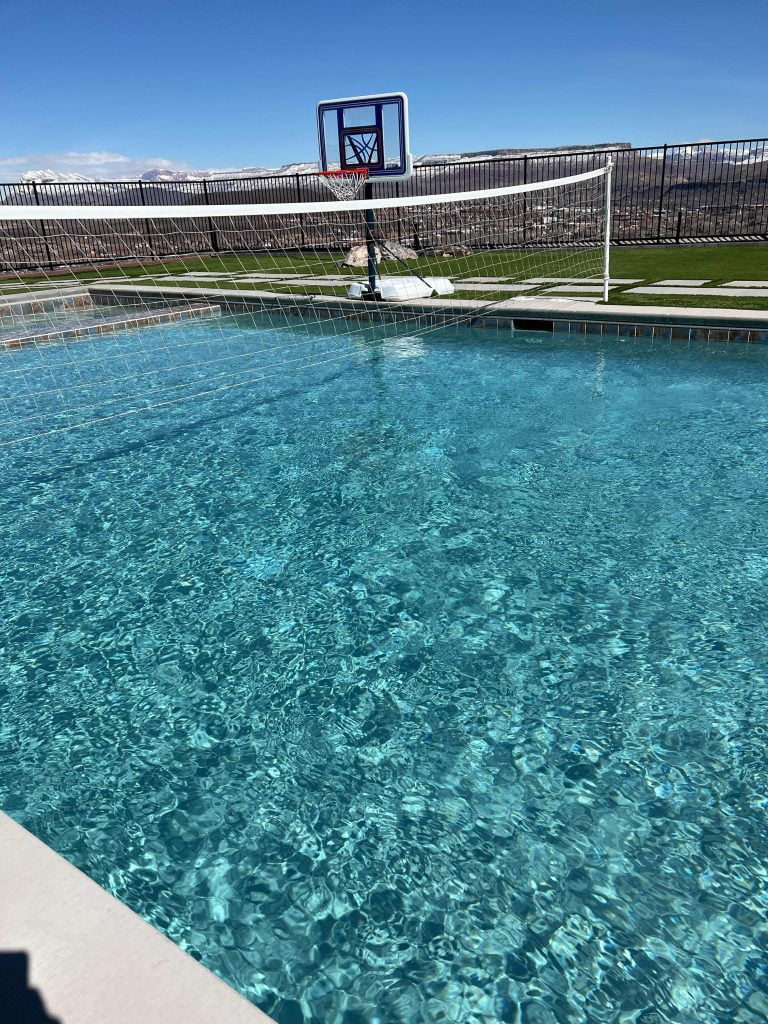
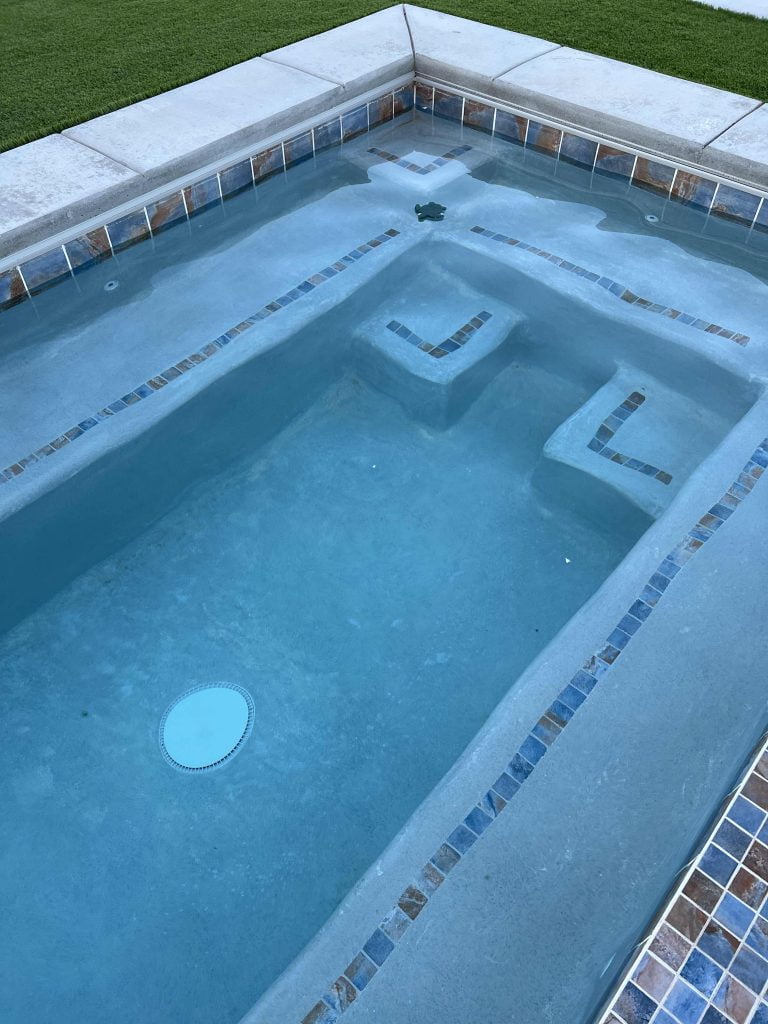
At this point we had successfully solved the low chlorine and algae problems. We had the pool at the proper cyanuric acid and salt levels. The leak in the suction line was resolved and the pool was stabilized.
Now that all the issues were resolved this pool has been much easier to service. We have dialed in the percentage on their chlorinator and mainly just brush the pool walls, steps, swim deck and spa. We still add small amounts of muriatic acid to control pH and over the winter had to add some chlorine due to the salt cell not functioning under 60 degrees of water temp.
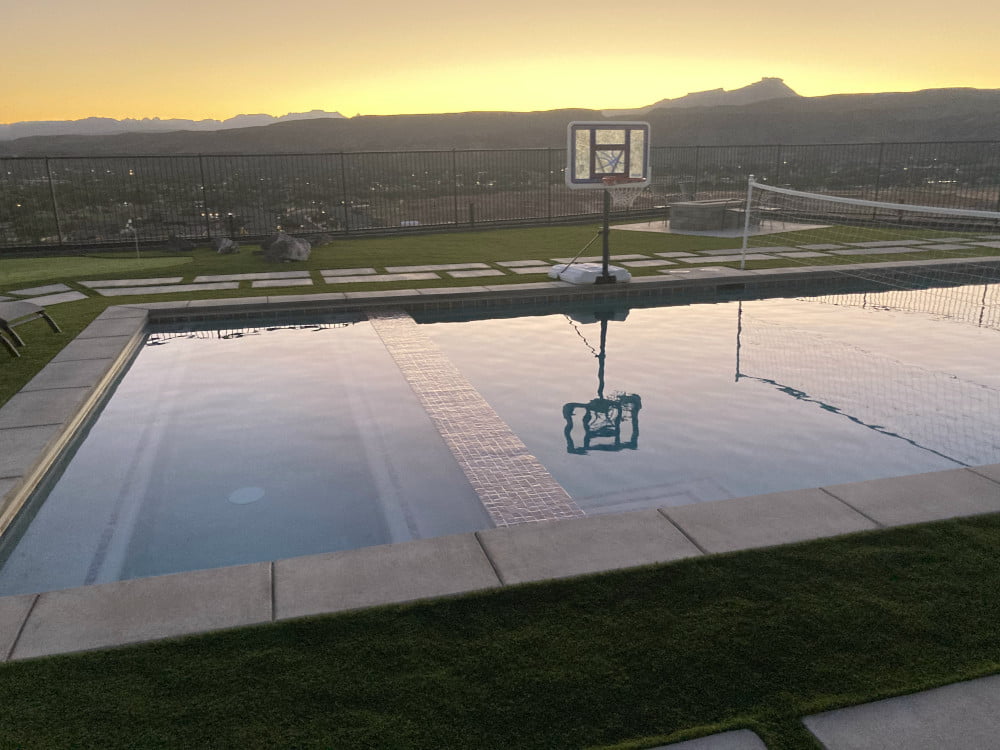
All in all this swimming pool was initially fairly complicated to get stable and within our normal range. Now that we are on top of the pool service this client could not be happier. Their pool is now clean, safe, sanitary, and not leaking!
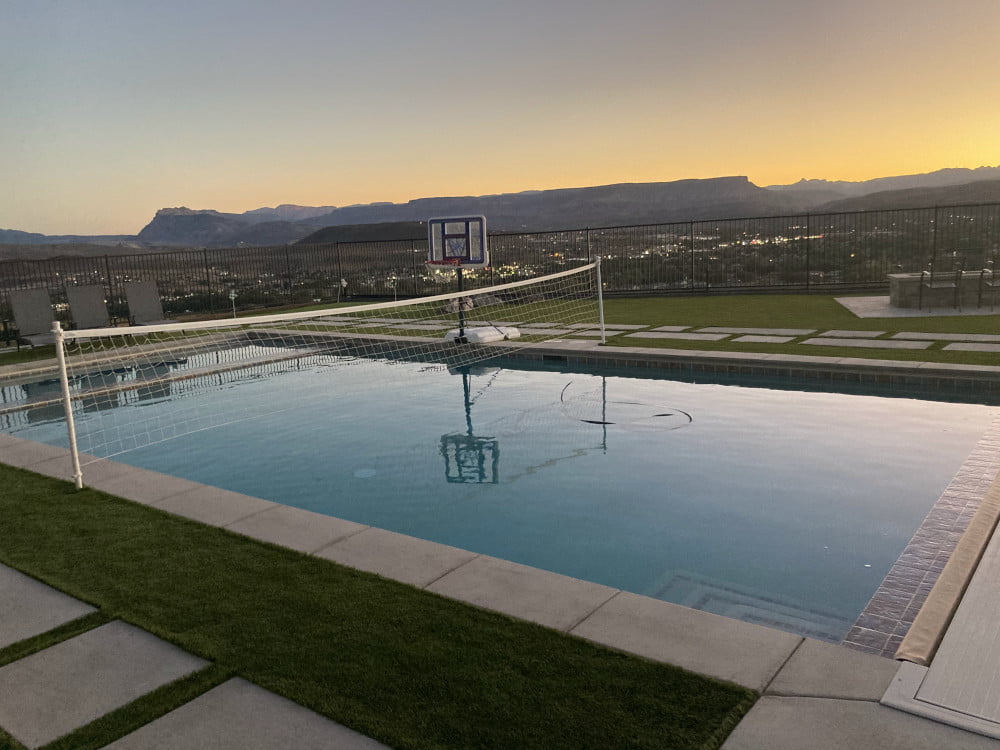
Would you like a free quote for pool service?
We offer an easy-to-use, instant quote form that gives you a quote on pool service in Hurricane based on your pool size, location, and frequency of service. Do not wait for your small pool problems to become large problems. Get a free quote today!
